Strong wings make Baltimore Orioles fly the best. Any ordinary ornithologist knows that. It has taken decades for executives in charge of Baltimore’s Baseball Birds to recognize what was once a given fact.
Finally, the Orioles’ farm system is producing pitching prospects as well as position players. For the first time in years, the team’s outlook appears as bright as the vibrant colors on a real-to-life flying oriole.
Stuck in the baseball meat grinder known as the American League East with the offensive-oriented New York Yankees, Toronto Blue Jays, Tampa Bay Rays, and Boston Red Sox, the Orioles made great strides in 2022 and hope to continue moving up this year. They went 83-79 for their first winning season since 2016. That drought included three of the worst years in club history. In 2018, 2019, and 2021 they went a combined 153-333 (.315). Horrendous!
Pitching was Key for Baltimore
Improved pitching, partly the by-product of moving the left-field wall out of band-box territory to a reasonable length from home plate, was key. The team ERA went from an unsightly 5.84 with more than 116 hits allowed than innings in 2021 to 3.97 and 27 fewer hits than innings pitched. Progress!
A fine bullpen helped. Jorge Lopez had 19 saves, a 1.68 ERA, and made the all-star team before being dealt to the Minnesota Twins for more needed prospects. Gigantic Felix Bautista (6-foot-8, 285 pounds) was a huge force in a setup role and replaced Lopez as closer, getting 15 saves, a 2.19 ERA, and 88 strikeouts in 65 2/3 innings while allowing only 38 hits. Little lefty Cionel Perez was big (7-1, 1.40 ERA) and right-handers Keegan Akin, Bryan Baker, and Dillon Tate helped. Old friend Mychal Givens (2015-20 in Baltimore) was given a one-year deal as a free agent this winter to add depth.
Still need starters
Embed from Getty Images
Jordan Lyles (12-11) led the club in 2022. He left as a free agent and Baltimore replaced him by signing 35-year-old Kyle Gibson (10-8 for the NL champion Philadelphia Phillies) to a one-year, $10 million deal, then traded for lefty Cole Irvin, who got little run support while going 9-13 with a 3.98 ERA for the Oakland Athletics in 2022. Staff ace John Means worked only eight innings before having Tommy John Surgery. If he can make it back in full form in the second half of 2023, that would be a boost.
Embed from Getty Images
Despite being rumored to be in talks for several big-name, high-priced starters, the Orioles were more tweet than treat. It may be because they do have prospects with big potential in Grayson Rodriguez, DL Hall, Drew Rom, Justin Armbruester, Chayce McDermott, and Ryan Watson. Remember those names.
You may not have time to forget Rodriguez. The lithe righty was 6-1 with a 2.20 ERA at Triple-A a year ago and was seemingly set for a call-up. Instead, he was shut down in June with a lat injury. He may make his MLB debut soon.
Otherwise, Dean Kremer (8-7, 3.23 ERA) and Austin Voth (5-4, 3.04 ERA) head a group that includes Tyler Wells, Spenser Watkins, and Kyle Bradish battling for rotation spots. It could be worse. It used to be worse. To contend, it must be better.
O – As In Offense
The 2023 Orioles should score runs with outfielders Cedric Mullins, Austin Hays, and Anthony Santander, first baseman Ryan Mountcastle and second-year star catcher Adley Rutschman in place. A strong start could put any in the All-Star Game. Rookie of the Year candidate Gunnar Henderson is tabbed to play at third with speedy Jorge Mateo at short. They all helped the O’s turn the corner last year.
Free agent Adam Frazier was signed to play second base and veteran catcher James McCann was acquired from the New York Mets to back up Rutschman and get some time at DH. Minor-league signings Nomar Mazara, Ryan O’Hearn, and Franchy Cordero could be bats off the bench.
Embed from Getty Images
The farm is growing more lumber. Kyle Stowers, Connor Norby, Jordan Westburg, Colton Cowser, Joey Ortiz and Coby Mayo are coming on strong. Jackson Holliday, a multi-talented middle infielder drafted No. 1 overall a year ago, is turning heads this spring at age 19. He got an $8.19 million signing bonus last summer, then batted .297 in 20 games in the low minors. This spring he has hit .385 in 14 games. That’s all more good news than the franchise has accumulated overall for decades.
Starting With Starters
Embed from Getty Images
From 1960 through 1985, the Orioles had the best winning percentage of all teams in the four major sports: MLB, NFL, NBA, and NHL. Baltimore had a winning record in 24 of those 26 seasons. In the 36 years since, their fans have gotten to enjoy only 10 seasons above .500. The reason: a move to a new ballpark in 1992, bizarre ownership, and management decisions along with poor pitching. Those three factors are all intertwined.
Manager Paul Richards insisted the organization sign every pitching prospect it could find once he added the general manager duties to his plate in the late 1950s. The Orioles spent a lot of money and got great results. Some got away. They lost future AL Cy Young winner Dean Chance and talented lefty Bo Belinsky to the expansion Los Angeles Angels.
Perhaps the best (or worst) of all, legendary lefty Steve Dalkowski blew out his arm in spring training just as he was about to make the team after years of being the wildest, fastest pitcher ever. How fast and how wild? In 1960, he fanned 262 in 170 innings and gave up a scant 105 hits. He also walked 262, leading to a 7-15 record and 5.14 ERA. The great Ted Williams walked up to the plate during a spring practice, saw one pitch, and tossed his bat aside saying, “No way.”
In 236 games in the minors, Dalkowski fanned 1,324, walked 1,236, and allowed only 664 hits in 956 innings. He went 46-80 overall with a career ERA near six. Cartoon numbers, both silly and scary.
1960s Baltimore Orioles Fly High
Embed from Getty Images
In Baltimore in 1960, the Orioles began mixing offense with defense and strong pitching. The Baby Birds rotation of Milt Pappas, Chuck Estrada, Steve Barber, Jack Fisher, and Jerry Walker (all 22 or younger) had Baltimore in first place on Sept. 14 with help from knuckleball veterans Hal Brown and Hoyt Wilhelm. A four-game sweep in New York sent the Kiddie Korps tumbling to a second-place finish to the mighty Yankees.
Rookie of the Year shortstop Ron Hansen had 22 homers, 23-year-old third baseman Brooks Robinson hit .294, Jackie Brandt (acquired for lefties Billy ODell and Billy Loes) added offense and defense in center and slugging first baseman Jim Gentile joined catcher Gus Triandos and 37-year-old outfielder Gene Woodling in the middle of the order.
The Orioles kept adding offense and built a juggernaut in the 60s trading for Hall of Fame shortstop Luis Aparicio, developing slugger and 1970 AL MVP Boog Powell, 1965 Rookie of the Year outfielder Curt Blefary and perennial gold glovers Paul Blair (CF) and Davey Johnson (2B). The biggest addition was acquiring the great outfielder Frank Robinson from Cincinnati before the 1966 season. He was the tough-as-nails, no-nonsense leader the often fun-loving O’s lacked in years of challenging but falling short. Robinson immediately won the Triple Crown and led Baltimore to a World Series championship.
Perennial Pitching Prowess
Baltimore’s pitching completely shut down the Los Angeles Dodgers in a four-game sweep in the ’66 Series. Moe Drabowsky struck out 11 and gave up one hit in 6 2/3 innings of relief to win Game One. Jim Palmer, Wally Bunker, and Dave McNally followed with complete-game shutouts. That was 33 2/3 consecutive shutout innings.
The Orioles added offense over the next 20 years. Don Buford, Bobby Grich, Don Baylor, 1973 Rookie of the Year Al Bumbry, Lee May, Ken Singleton, Gary Roenicke, John Lowenstein, and Hall of Famers Reggie Jackson (for one year), Eddie Murray, and Cal Ripken Jr. were the most significant run producers.
Palmer Leads the Orioles
Embed from Getty Images
Pitching, particularly by Palmer, the three-time Cy Young Award winner (1973, 1975-76) led the way, however. Mike Cuellar (1969), Mike Flanagan (1979), and Steve Stone (1980) won the award, too.
There is no question that spacious Memorial Stadium helped Orioles hurlers. Though only 309 feet down both lines, the outfield expanded quickly and the power alleys in both left and right center were among the deepest in baseball. In the early years, outfielders could seemingly roam for days to track down fly balls.
That was great for speedy center-fielder Chuck Diering in 1954. With it being 445 feet to left and right center– and with no fence in center (a 3-foot-high hedge at 458 feet was there instead), Baltimore hit only 19 homers at home that year after moving from St. Louis and compiling an awful 54-100 record.
While playing through 1991 in Memorial Stadium, where the dimensions in left and right-center were “scaled back” to 378 feet, the Orioles placed 35 pitchers on the AL All-Star team. Since moving into Camden Yards in 1992, they have had 12 all-star hurlers. That is 35 all-star pitchers in 38 years at the old place and only 12 in the 32 years at the new ballpark.
24 x 20 = Winning
From 1963 until 1984, Orioles pitchers won 20 or more in a season 24 times. Since then, zilch. In 1971, the entire rotation won 20 or more.
Here are the 20-game winners:
Embed from Getty Images
Jim Palmer
1970 (20-10), 1971 (20-9), 1972 (21-10), 1973 (22-9), 1975 (23-11) 1976 (22-13), 1977 (20-11), 1978 (21-12)
Dave McNally
1968 (22-10), 1969 (20-7), 1970 (24-9), 1971 (21-5)
Mike Cuellar
1969 (23-11), 1970 (24-8), 1971 (20-9), 1974 (22-10)
Steve Barber
1963 (20-13)
Pat Dobson
1971 (20-8)
Wayne Garland
1976 (20-7)
Mike Torrez
1977 (20-9)
Mike Flanagan
1979 (23-9)
Steve Stone
1980 (25-7)
Scott McGregor
1980 (20-8)
Mike Boddicker
1984 (20-11)
Mike Mussina came close at Camden, going 19-9 and 19-11 in 1995-96. He finally won 20 at age 39 for the Yankees (20-9 in 2008) and retired. He went 270-153 overall, including 141-81 in 10 years with Baltimore.
Baltimore had some good relief over the years, from Wilhelm (the first reliever elected to the Hall of Fame), Stu Miller, Eddie Watt, Tippy Martinez, 1989 Rookie of the Year Gregg Olson, Randy Myers, and others. Yet the success started with strong starters. Management has finally realized it needs to be that way again.
More Baltimore Orioles Articles
More MLB Articles
Main Photo:
Embed from Getty Images
- Category
-
Baltimore Orioles

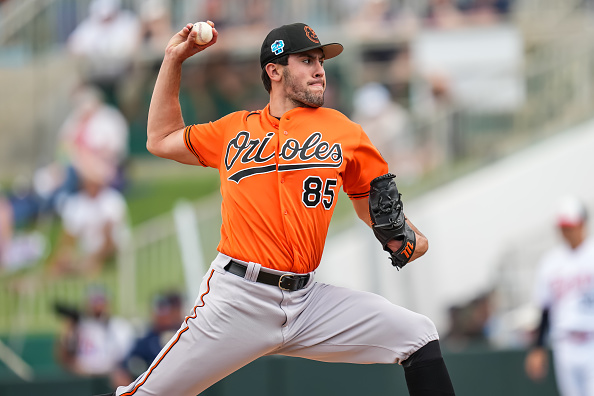
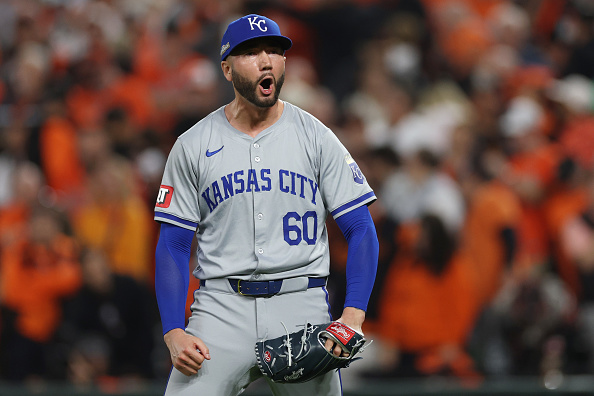
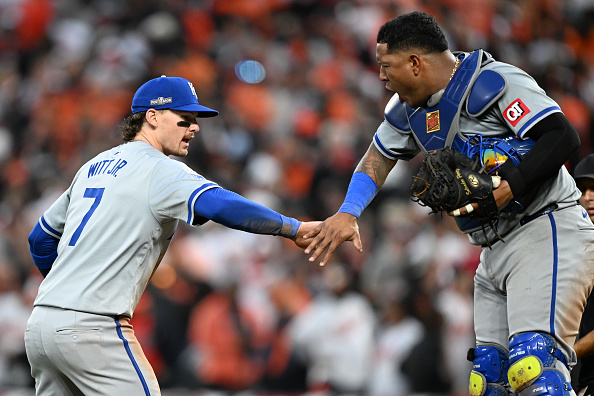
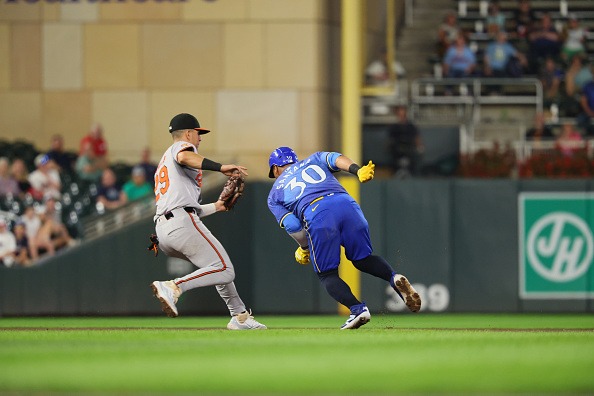
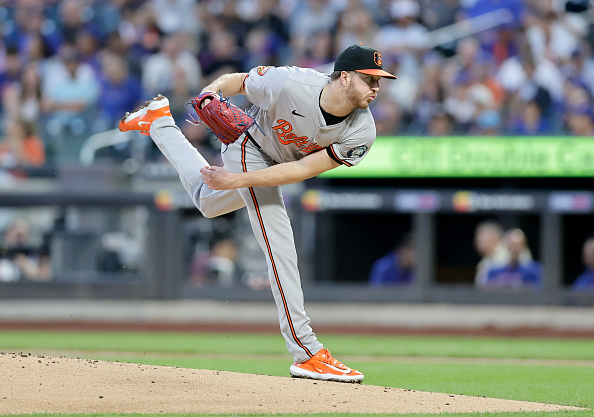
One thought on “Baltimore Orioles 2023: Ready To Fly Again?”